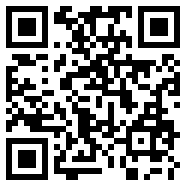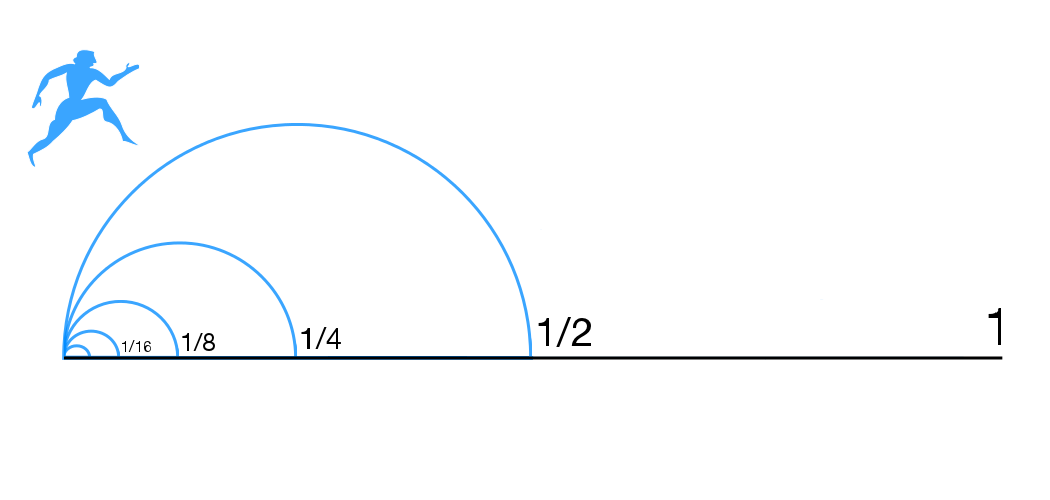|
Dichotomy
A dichotomy is a partition of a whole (or a set) into two parts (subsets). In other words, this couple of parts must be * jointly exhaustive: everything must belong to one part or the other, and * mutually exclusive: nothing can belong simultaneously to both parts. If there is a concept A, and it is split into parts B and not-B, then the parts form a dichotomy: they are mutually exclusive, since no part of B is contained in not-B and vice versa, and they are jointly exhaustive, since they cover all of A, and together again give A. Such a partition is also frequently called a bipartition. The two parts thus formed are complements. In logic, the partitions are opposites if there exists a proposition such that it holds over one and not the other. Treating continuous variables or multi categorical variables as binary variables is called dichotomization. The discretization error inherent in dichotomization is temporarily ignored for modeling purposes. Etymology The term '' ... [...More Info...] [...Related Items...] OR: [Wikipedia] [Google] [Baidu] |
False Dichotomy
A false dilemma, also referred to as false dichotomy or false binary, is an informal fallacy based on a premise that erroneously limits what options are available. The source of the fallacy lies not in an invalid form of inference but in a false premise. This premise has the form of a disjunctive claim: it asserts that one among a number of alternatives must be true. This disjunction is problematic because it oversimplifies the choice by excluding viable alternatives, presenting the viewer with only two absolute choices when in fact, there could be many. For example, a false dilemma is committed when it is claimed that "Stacey spoke out against capitalism; therefore, she must be a communist". One of the options excluded is that Stacey may be neither communist nor capitalist. False dilemmas often have the form of treating two contraries, which may both be false, as contradictories, of which one is necessarily true. Various inferential schemes are associated with false dilemmas, ... [...More Info...] [...Related Items...] OR: [Wikipedia] [Google] [Baidu] |
Binary Opposition
A binary opposition (also binary system) is a pair of related terms or concepts that are opposite in meaning. Binary opposition is the system of language and/or thought by which two theoretical opposites are strictly defined and set off against one another. It is the contrast between two mutually exclusive terms, such as on and off, up and down, left and right. Binary opposition is an important concept of structuralism, which sees such distinctions as fundamental to all language and thought.Baldick, C 2004. The concise Oxford Dictionary of literary terms, viewed 8 March 2011, http://www.highbeam.com/doc/1056-binaryopposition.html In structuralism, a binary opposition is seen as a fundamental organizer of human philosophy, culture, and language. Binary opposition originated in Saussurean structuralist theory.Fogarty, S 2005, The literary encyclopedia, viewed 6 March 2011, http://www.litencyc.com/php/stopics.php?pec=true&UID=122 According to Ferdinand de Saussure, the binary opposit ... [...More Info...] [...Related Items...] OR: [Wikipedia] [Google] [Baidu] |
Dilemma
A dilemma ( grc-gre, δίλημμα "double proposition") is a problem offering two possibilities, neither of which is unambiguously acceptable or preferable. The possibilities are termed the ''horns'' of the dilemma, a clichéd usage, but distinguishing the dilemma from other kinds of predicament as a matter of usage. Terminology The term ''dilemma'' is attributed by Gabriel Nuchelmans to Lorenzo Valla in the 15th century, in later versions of his logic text traditionally called ''Dialectica''. Valla claimed that it was the appropriate Latin equivalent of the Greek ''dilemmaton''. Nuchelmans argued that his probable source was a logic text of c.1433 of George of Trebizond. He also concluded that Valla had reintroduced to the Latin West a type of argument that had fallen into disuse. Valla's neologism did not immediately take hold, preference being given to the established Latin term ''complexio'', used by Cicero, with ''conversio'' applied to the upsetting of dilemmatic reason ... [...More Info...] [...Related Items...] OR: [Wikipedia] [Google] [Baidu] |
Binary Variable
Binary data is data whose unit can take on only two possible states. These are often labelled as 0 and 1 in accordance with the binary numeral system and Boolean algebra. Binary data occurs in many different technical and scientific fields, where it can be called by different names including ''bit'' (binary digit) in computer science, ''truth value'' in mathematical logic and related domains and ''binary variable'' in statistics. Mathematical and combinatoric foundations A discrete variable that can take only one state contains zero information, and is the next natural number after 1. That is why the bit, a variable with only two possible values, is a standard primary unit of information. A collection of bits may have states: see binary number for details. Number of states of a collection of discrete variables depends exponentially on the number of variables, and only as a power law on number of states of each variable. Ten bits have more () states than three decimal digits ... [...More Info...] [...Related Items...] OR: [Wikipedia] [Google] [Baidu] |
Nominal Scale
Level of measurement or scale of measure is a classification that describes the nature of information within the values assigned to variables. Psychologist Stanley Smith Stevens developed the best-known classification with four levels, or scales, of measurement: nominal, ordinal, interval, and ratio. This framework of distinguishing levels of measurement originated in psychology and is widely criticized by scholars in other disciplines. Other classifications include those by Mosteller and Tukey, and by Chrisman. Stevens's typology Overview Stevens proposed his typology in a 1946 ''Science'' article titled "On the theory of scales of measurement". In that article, Stevens claimed that all measurement in science was conducted using four different types of scales that he called "nominal", "ordinal", "interval", and "ratio", unifying both " qualitative" (which are described by his "nominal" type) and "quantitative" (to a different degree, all the rest of his scales). The conc ... [...More Info...] [...Related Items...] OR: [Wikipedia] [Google] [Baidu] |
Discretization
In applied mathematics, discretization is the process of transferring continuous functions, models, variables, and equations into discrete counterparts. This process is usually carried out as a first step toward making them suitable for numerical evaluation and implementation on digital computers. Dichotomization is the special case of discretization in which the number of discrete classes is 2, which can approximate a continuous variable as a binary variable (creating a dichotomy for modeling purposes, as in binary classification). Discretization is also related to discrete mathematics, and is an important component of granular computing. In this context, ''discretization'' may also refer to modification of variable or category ''granularity'', as when multiple discrete variables are aggregated or multiple discrete categories fused. Whenever continuous data is discretized, there is always some amount of discretization error. The goal is to reduce the amount to a level conside ... [...More Info...] [...Related Items...] OR: [Wikipedia] [Google] [Baidu] |
Levels Of Measurement
Level of measurement or scale of measure is a classification that describes the nature of information within the values assigned to variables. Psychologist Stanley Smith Stevens developed the best-known classification with four levels, or scales, of measurement: nominal, ordinal, interval, and ratio. This framework of distinguishing levels of measurement originated in psychology and is widely criticized by scholars in other disciplines. Other classifications include those by Mosteller and Tukey, and by Chrisman. Stevens's typology Overview Stevens proposed his typology in a 1946 ''Science'' article titled "On the theory of scales of measurement". In that article, Stevens claimed that all measurement in science was conducted using four different types of scales that he called "nominal", "ordinal", "interval", and "ratio", unifying both " qualitative" (which are described by his "nominal" type) and "quantitative" (to a different degree, all the rest of his scales). The conc ... [...More Info...] [...Related Items...] OR: [Wikipedia] [Google] [Baidu] |
Dichotomy Paradox
Zeno's paradoxes are a set of philosophical problems generally thought to have been devised by Greek philosopher Zeno of Elea (c. 490–430 BC) to support Parmenides' doctrine that contrary to the evidence of one's senses, the belief in plurality and change is mistaken, and in particular that motion is nothing but an illusion. It is usually assumed, based on Plato's ''Parmenides'' (128a–d), that Zeno took on the project of creating these paradoxes because other philosophers had created paradoxes against Parmenides' view. Thus Plato has Zeno say the purpose of the paradoxes "is to show that their hypothesis that existences are many, if properly followed up, leads to still more absurd results than the hypothesis that they are one." Plato has Socrates claim that Zeno and Parmenides were essentially arguing exactly the same point. Some of Zeno's nine surviving paradoxes (preserved in Aristotle's ''Physics'' [...More Info...] [...Related Items...] OR: [Wikipedia] [Google] [Baidu] |
Quadrature (astronomy)
In spherical astronomy, quadrature is the configuration of a celestial object in which its elongation is perpendicular to the direction of the Sun. It is applied especially to the position of a superior planet or the Moon at its first and last quarter phases. This is not to be confused with the Moon at dichotomy (exactly half-lit) as viewed from Earth, which occurs at 89.85 degrees and 270.15 degrees. As shown in the diagram, a planet (or other object) can be at the western quadrature (when it is to the west of the Sun when viewed from the Earth) or at the eastern quadrature (when it is to the east of the Sun when viewed from the Earth). Note that an inferior planet can never be at quadrature to the reference planet. At quadrature, the shadow that a planet casts on its planetary rings appears most offset from the planet (e.g., Saturn's rings); the dark side of a planet (e.g., Mars) is maximally visible. See also * Astrological aspect In astrology, an aspect is an angl ... [...More Info...] [...Related Items...] OR: [Wikipedia] [Google] [Baidu] |
Statistics
Statistics (from German language, German: ''wikt:Statistik#German, Statistik'', "description of a State (polity), state, a country") is the discipline that concerns the collection, organization, analysis, interpretation, and presentation of data. In applying statistics to a scientific, industrial, or social problem, it is conventional to begin with a statistical population or a statistical model to be studied. Populations can be diverse groups of people or objects such as "all people living in a country" or "every atom composing a crystal". Statistics deals with every aspect of data, including the planning of data collection in terms of the design of statistical survey, surveys and experimental design, experiments.Dodge, Y. (2006) ''The Oxford Dictionary of Statistical Terms'', Oxford University Press. When census data cannot be collected, statisticians collect data by developing specific experiment designs and survey sample (statistics), samples. Representative sampling as ... [...More Info...] [...Related Items...] OR: [Wikipedia] [Google] [Baidu] |
Computer Science
Computer science is the study of computation, automation, and information. Computer science spans theoretical disciplines (such as algorithms, theory of computation, information theory, and automation) to Applied science, practical disciplines (including the design and implementation of Computer architecture, hardware and Computer programming, software). Computer science is generally considered an area of research, academic research and distinct from computer programming. Algorithms and data structures are central to computer science. The theory of computation concerns abstract models of computation and general classes of computational problem, problems that can be solved using them. The fields of cryptography and computer security involve studying the means for secure communication and for preventing Vulnerability (computing), security vulnerabilities. Computer graphics (computer science), Computer graphics and computational geometry address the generation of images. Progr ... [...More Info...] [...Related Items...] OR: [Wikipedia] [Google] [Baidu] |
.jpg)



